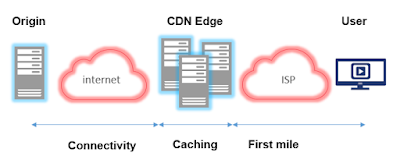I've noticed that in our communication, we often tend to pass judgment, which is processed information, instead of passing raw information. That is unfair to the ones that we are speaking to, because we do not give them the chance to have their own judgement. Not only it's unfair, but it is also source of misunderstandings and conflicts:
- Upset customer about service: "Your network's quality is not good enough, we are receiving complaints from our users"
- Excited business developer about a new opportunity: "Management should support me, this project will generate around 1M€ of revenues, huge one!"
- Angry work colleague: "You did not reply to my emails several times this week"
In all of the above examples, sent information is not objective. I will give in the following some tips for achieving healthier communication.
The first golden tip would be: "A little less adverbs, a little more data!". Adverbs (too much, extremely, slightly, highly, nearly, very, quite, sometimes, seldom, often) without supporting data are pure judgment. Consider the upset customer again rather telling you, his network provider: "In the last week, the latency on your network was 150ms on average between our offices in Dubai and Paris, causing up to 10 user complaints regarding calls quality". In the first case, you are probably opening a ticket with your technical services in order to correct the issue, but in the second case, you are probably going to compare noted performance to contracted SLAs, might find it compliant, and thus propose a new feature (VoIP QoS) in order to improve the customer experience. In the first case, you are loosing time, whereas in the second you are generating new revenues.
The second tip is backing absolute values with references for better appreciation. For example, compare sales growth rate of this quarter to the same quarter of last year and compare churn rate of your customer base to your industry average. Consider our excited business developer again: 1M€ is indeed a lot of revenues, but his company has limited resources and got in its pipe some other projects generating 10M€ each. It wouldn't be surprising that the 1M€ project will not get priority (a small confession: it's a true personal story!).
The third tip is providing information about samples as well as about the population that we are sampling. Consider the angry colleague again. It's true that this week you didn't answer 5 of his emails, but he globally sent you over 100 mails, which means that you had around 95% responsiveness rate! the sample here is unanswered emails, but the population is sent emails. That would completely calm your colleague :)
Using data in our communication is not about inhibiting the expression of our thoughts and emotions. On the contrary, you are free to add your own subjective judgement, as long as you provide the full picture backed with data. Not only you will give your interlocutor the chance to have his own judgement, but sometimes, by using objective data, your own perception and judgement can change. This is typically the case when your judgement is biased by temporary emotions.
In this post, I gave mostly work related examples, but it's applicable to everyday communications: Better say "I love you like the ocean" than "I love you a lot" hein? :D






